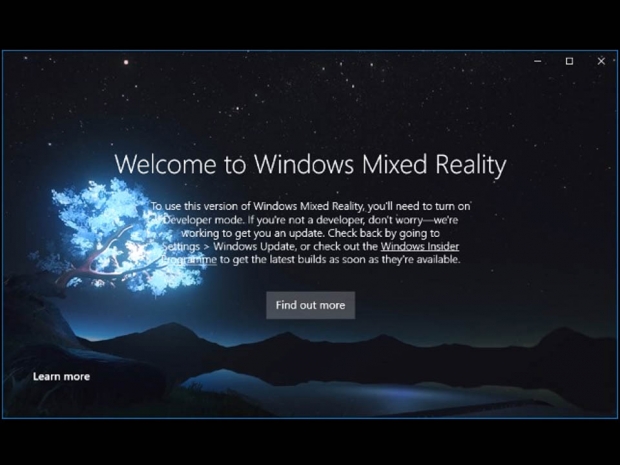The first sighting of Windows Mixed Reality was included with Windows 10 Insider Build 14971 back in November, but that release only included an application to check for hardware compatibility by meeting the minimum requirements. The latest Windows 10 Insider Build 15048 now includes a dedicated portal for accessing Mixed Reality content demonstrations to those few developers fortunate enough to get their hands on one of the early Mixed Reality development kits that will be shipping later this month.
To make it work, people must first enable Developer Mode in the operating system which requires opening Settings, clicking Update and Security, navigating to the “For Developers” section, and clicking “Yes” to enable “Developer Mode”.
Once this is happens, the Start menu list of programs will show the Windows Mixed Reality portal, along with a Welcome to Windows Mixed Reality splash screen. Users can then click the “Set up simulation (for developers)” link to browse through a first-person 3D environment. The application currently supports forwards and backwards movements, strafing and panning using the W, A, S, D keys. Holding the “Shift” key will allow a user to run, while arrow keys will allow 360-degree browsing of the environment.
“All-in-one” premium headsets and lightweight HMDs arriving this year
Whilst this feature is basically hidden in the latest Insider build, it serves mainly as a sample of what developers and consumers can expect when the first Windows Mixed Reality headsets begin shipping later this Spring. Now, the full OEM list includes Acer, ASUS, Dell, HP and Lenovo and all devices are expected to leverage new 3D technologies, including inside-out tracking sensors with six degrees of freedom. The devices will be available in both all-in-one tethered designs for high performance productivity and gaming, as more fashion forward lightweight designs suited for lightweight productivity apps and untethered entertainment.




